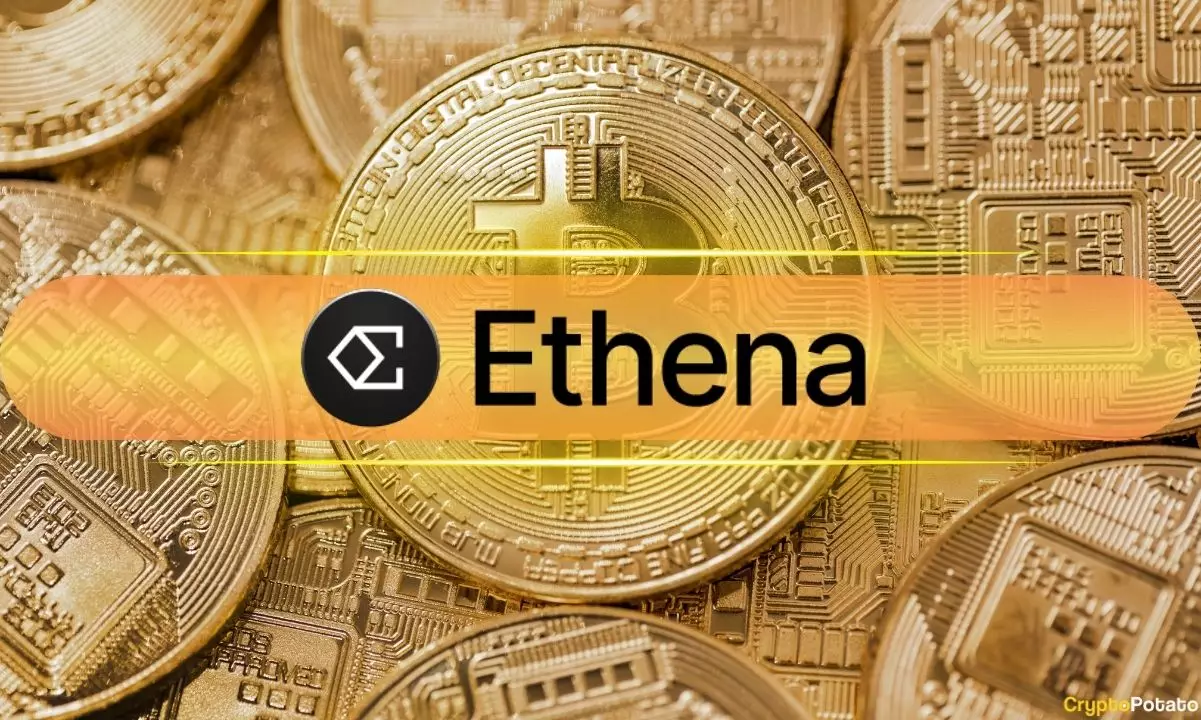Ethena has introduced a synthetic dollar protocol on Ethereum that issues the stablecoin USDe with the vision of creating a censorship-resistant and scalable form of digital money pegged to the US dollar. However, a recent deep dive conducted by on-chain analytics firm CryptoQuant has shed light on the potential risks associated with the rapidly growing stablecoin, which has achieved a market capitalization exceeding $2 billion in a significantly shorter time span than its counterparts.
USDe’s market cap surged to nearly $2.4 billion in a short period, marking a 900% increase since its launch in February and positioning it as the fifth-largest stablecoin in the market. The stablecoin is backed by crypto assets such as ETH and BTC, utilizing delta hedging through short positions on centralized exchanges to maintain its peg to the US dollar. Users can mint USDe by depositing BTC, ETH, stETH, or USDT into the protocol, initiating equivalent short perpetual positions without an expiration date.
However, one of the key risks identified involves maintaining USDe’s peg amidst potential “funding risks,” particularly when facing negative funding rates due to an imbalance in short and long positions. Funding rates play a vital role in aligning the price of perpetual futures with the underlying asset’s price. CryptoQuant’s analysis revealed that Ethena’s current reserve fund of $32.7 million could cover substantial negative funding rates if USDe’s market cap remains below $4 billion. Still, as the market cap increases, the reserve fund would need to grow significantly to mitigate risks associated with larger short positions.
The head of research at CryptoQuant, Julio Moreno, highlighted the significance of monitoring Ethena’s reserve fund adequacy in relation to USDe’s market capitalization to navigate periods of extensive negative funding rates effectively. Additionally, the “keep rate,” which determines the portion of yield directed to reserves, plays a critical role in strengthening the reserves consistently based on USDe’s market cap to withstand adverse market conditions, especially during a bear market.
Comparative Analysis and Investor Concerns
Investors may express apprehensions regarding algorithmic stablecoins, given the historical context of the Terra/Luna ecosystem’s dramatic rise and subsequent collapse in 2022. Furthermore, USDe’s alluring yields of up to 17% have drawn parallels with Terraform Lab’s UST, a previously hyped stablecoin that experienced a significant downturn, triggering widespread effects in the crypto market.
While Ethena’s USDe stablecoin has rapidly gained traction and positioned itself as a prominent player in the stablecoin market, the analysis conducted by CryptoQuant emphasizes the importance of closely monitoring the stablecoin’s reserve fund adequacy and keep rate to address potential risks associated with maintaining its peg and navigating volatile market conditions. As investors evaluate their risk exposure, it becomes imperative to exercise caution and vigilance when engaging with high-yield stablecoin offerings like USDe to ensure financial stability and sustainability in the long run.
















Leave a Reply